Megjegyzések / Kérdések (19)
![]() Sabine írta:
Sabine írta:
Also müsste es richtig lauten: In der nächsten Hinreihe ... ... dies wiederholen in jeder 2. ... 4. Reihe".
22.11.2024 - 10:25
![]() Sabine írta:
Sabine írta:
Nach der ersten Lochreihe heißt es: "Dann auf der rechten Seite der Arb in jeder 4.R 1 M aufn und auf der linken Seite der Arb in jeder 2. Reihe 1 M abn" Geschieht dies weiterhin in den Hinreihen? Ist die Lochreihe dann bereits die 1. Reihe? Oder wird nach der Lochreihe erst eine Hinreihe gestrickt und dann beginnt das Zählen neu?
20.11.2024 - 13:38A DROPS Design válasza:
Liebe Sabine, die Abnahmen werden am Anfang einer Hin-Reihe in jeder 2. Hin-Reihe (= jeder 4. Reihe) gearbeitet, und die Zunahmen am Ende einer Hin-Reihe in jeder 2. Reihe (jeder Hin-Reihe) gearbeitet. Also die rechte Seite der Arbeit = Anfang einer Hin-Reihe und die linke Seite der Arbeit = am Ende einer Hin-Reihe. Viel Spaß beim Stricken!
20.11.2024 - 16:25
![]() Lotte írta:
Lotte írta:
Hej, jeg er nybegynder og har brug for hjælp til en detalje i opskriften. Der står “Nu strikkes der hulrække således fra vrangen: 2 r sm, slå om”, og jeg er i tvivl om, hvorvidt jeg skal gå direkte fra, at strikkepinden vikles bag om garnet og over i at strikke 2 masker sammen i en ret. Eller om jeg skal vikle strikkepinden bag garnet og derefter strikke en ret (så jeg får 2 masker), og dernæst strikke 2 r sm.??
02.10.2024 - 14:34A DROPS Design válasza:
Hej Lotte. Du ska kun strikke 2 ret sammen och sedan slå om (ikke någon ret mellan). Mvh DROPS Design
14.10.2024 - 14:48
![]() Jeanette Hingebjerg írta:
Jeanette Hingebjerg írta:
Der står:videre tages der 1 m ind i højre side af arbejdet på hver 4 pind.(går ud fra at det er højre set fra retsiden, altså i slutningen) og 1 m ud i venstre side af arbejdet på hver 2.pind (Altså i starten) Men er det så de 2 første jeg tager ind på hver 2 pind? Og hvor tager jeg ud på hver 4 pind, er det før eller efter picokant?
03.08.2024 - 22:20A DROPS Design válasza:
Hej Jeanette, både ind og udtagningerne er beskrevet på samme pind, så bare følg pind 1 og 2 til arbejdet måler det som står i din størrelse :)
06.08.2024 - 14:19
![]() Martina írta:
Martina írta:
Ich würde gerne wissen wieviele Maschen man für den Picotrand anschlagen muss. Das steht nirgends in der Anleitung. Vielen Dank
28.08.2021 - 08:21A DROPS Design válasza:
Liebe Martina, die Maschen für den Picorand gehören zu der angeschlagenen Maschenanzahl, - der Picorand wird über die 4 Maschen auf der rechten Seite der Arbeit (Anfang den Hinreihen) gestrickt. Viel Spaß beim stricken!
30.08.2021 - 07:23
![]() Fourner Marie Louise írta:
Fourner Marie Louise írta:
Je voudrai le modéle du bonnet aviateur. Pour 3 mois
30.06.2020 - 22:38
![]() Bibbi írta:
Bibbi írta:
Var kommer hålraden innanför picotkanten runt ansiktet ifrån om man hela tiden ska sticka omslagen vridet rätt för att det inte ska bli hål?
08.09.2019 - 21:59A DROPS Design válasza:
Hej Bibbi, hålraden får du automatiskt när du stickar varv 2 i Picotkanten. Lycka till :)
12.09.2019 - 15:47Sumaira írta:
Hi is there any complete video for this hat pattern.
15.02.2017 - 17:38A DROPS Design válasza:
Dear Sumeira, there is no video showing how to work the full hat, but you can find (under tab "Videos" on the right side of "Materials) some videos showing the techniques used in that pattern such as the picot edge and how to assembly the hat tog. Happy knitting!
16.02.2017 - 09:29Sumaira írta:
After eyelet holesfrom WS pattern says"then increase 1st in every 4rows and dec 1. St in left side of piece every other row..I am not understanding this.every 4rows mean both right and wrong side...?
14.02.2017 - 14:04A DROPS Design válasza:
Dear Sumaira, you inc 1 st every 4th row = every other row worked from RS, and dec 1 st every other row = every row from RS. Happy knitting!
14.02.2017 - 15:02Jinky írta:
Thanks for this beautiful pattern, love making it, was wondering if you have an adult size for this one?
09.12.2015 - 01:51A DROPS Design válasza:
Dear Jinky, what about this one - just add a picot edge as in the baby pattern. Happy knitting!
09.12.2015 - 09:54
Lullaby#lullabybonnet |
|
|
|
|
Kötött DROPS sapka lustakötéssel és pikós szegéllyel "Karisma" fonalból. 0 -4 éves méretekben
DROPS Baby 25-3 |
|
|
LUSTAKÖTÉS (a kötőtűn oda-vissza): Minden sorban sima szemekkel kötünk. 1 borda = 2 sima szemekkel kötött sor PIKÓS SZEGÉLY (a kötőtűn oda-vissza): 1. sor (= színe oldal) Minden szemet sima szemekkel kötünk. 2. sor (= fonákoldal) Sima szemekkel kötünk, amíg 4 szem marad, ezeket a szemeket a következő módon kötjük le: 2 szemet simán összekötünk, 1 rh, az utolsó két szem mindegyikébe 2 szemet kötünk = 2 új szem a sorban. 3. sor (= színe oldal) az első szemet simán leemeltjük, 1 sima, a leemelt szemet a lekötött szemen átemeljük, 1 sima, és a jobboldali kötőtűn levő utolsó szemet átemeljük az első 2 szemen, majd a sor többi szemét sima szemekkel kötjük. 4. sor (= fonákoldal) Minden szemet sima szemekkel kötünk. Ismételjük a 1-4. sort ---------------------------------------------------------- SAPKA: A kezdéshez szedjünk fel 27-31-35-37 (41-43) szemet az 4 mm-es körkötőtűre, a Karisma fonalból. Tegyünk 1 jelölőt a legszélső 4 szem mellé a darab jobb oldalán (a színe oldalról nézve). Munka közben a jelölőket is mozdítsuk felfelé. Kössünk LUSTAKÖTÉSSEL- lásd a fenti magyarázatot UGYANAKKOR, a szélső 4 szemen kössük a pikós szegélyt- lásd a fenti magyarázatot. UGYANAKKOR, a darab jobboldalán szaporítsunk 1 szemet (a pikós szegély mellett), és fogyasszunk 1 szemet a darab bal oldalán a következő módon: 1. sor (= színe oldal) 4 szem pikós szegély, 1 sima, 1 rh (= 1 szemet szaporítottunk), kössünk, amíg 3 szem marad, 2 szemet simán összekötünk, 1 sima. 2. sor (= fonákoldal) Sima, a jelölőig (a rh-kat csavartan kössük le, így nem keletkezik lyuk), majd 4 szem pikós szegéllyel fejezzük be a sort. Ismételjük ezt a 2 sort, amíg a darabunk 5-5½-6-6½ (7-8) cm-es. Ezután fogyasszunk 1 szemet a darab jobboldalán, és szaporítsunk 1 szemet a baloldalán a következő módon: 1. sor (= színe oldal) 1 szem pikós szegély, 1 sima, 1 szemet simán leemelünk, 1 sima, a leemelt szemet a lekötött szemen átemeljük, kössünk addig, amíg 1 szem marad, 1 rh, 1 sima. 2. sor (= fonákoldal) Sima, a jelölőig (a rh-kat csavartan kössük le, így nem keletkezik lyuk), majd 4 szem pikós szegéllyel fejezzük be a sort. Ismételjük ezt a 2 sort, amíg 1 fonákoldali sor kell ahhoz, hogy a darabunk 10-11-12-13 (14-16) cm-es legyen. Most, a fonákoldalról készítsük el a lyuksort a következő módon: *2 szemet simán összekötünk, 1 rh* Ismételjük a *-* közötti részt, amíg 1 szem marad a jelölőig, 1 sima, a pikós szegély 4 szemével fejezzük be a sort. (a rh-okat a következő sorban nem csavartan, hanem simán kötjük le, hogy a lyukak megmaradjanak). Ezután szaporítsunk 1 szemet a darab jobb oldalán minden 4. sorban, és fogyasszunk 1 szemet a darab bal oldalán minden második sorban, amíg a darabunk 14½-15½-16½-17½ (18-19) cm-es a kezdő szegélytől. Ezután fogyasszunk 1 szemet a darab jobb oldalán minden 4. sorban, és szaporítsunk 1 szemet a darab bal oldalán minden második sorban, amíg a darabunk 19-20-21-22 (22-22) cm-es a kezdő szegélytől. A következő sorban (= fonákoldal) a következő módon kössünk lyuksort: *2 szemet simán összekötünk, 1 rh* Ismételjük a *-* közötti részt, amíg 1 szem marad a jelölőig, 1 sima, a pikós szegély 4 szemével fejezzük be a sort. (a RH-okat a következő sorban nem csavartan, hanem simán kötjük le, hogy a lyukak megmaradjanak). Ezután szaporítsunk 1 szemet a darab jobb oldalán minden második sorban, és fogyasszunk 1 szemet a bal oldalán a minden második sorban, amíg a darabunk 24-25½-27-28½ (29-30) cm-es lesz. Most fogyasszunk 1 szeme a jobboldalon minden második sorban, ás szaporítsunk 1 szemet a baloldalon minden második sorban a teljes méretig. ÖSSZEÁLLÍTÁS: A sapka hátulja = a darab egyik oldalának 2 teljes, és 2 fél csúcsa van. A 3 teljes csúcs közül a második a darab ellentétes oldalán, (tompa csúcs) lesz az eleje közepén a homlokon. Apró öltésekkel varrjuk össze a sapkát a következő módon: Varrjuk össze a háta közepén úgy, hogy az első fél-csúcsot az első egész csúccsal varrjuk össze. Folytassuk a varrást, az első teljes csúcsot varrjuk össze a második teljes csúcs első felével. Majd a második teljes csúcs másik felét varrjuk össze az utolsó fél-csúccsal. Végül varrjuk össze a sapkát a háta közepén. MEGKÖTŐK: Vágjunk le két db egyenként 150 cm hosszú fonalat. A két végét megfogva sodorjuk őket ellentétes irányba, amíg csak tudjuk. Fűzzük a megkötőt a sapka elején az egyik csúcs végébe a fonákoldalról a lyuksor egyik lyukába, hajtsuk félbe, és hagyjuk, hogy a két ág összesodródjon. A végére kössünk csomót. Készítsünk egy másik megkötőt, a sapka másik csücskére. |
|
Elkészítette ezt a mintát?Akkor adja a képeihez a #dropspattern #lullabybonnet tageket, vagy küldje be a képet a #dropsfan galériába. Segítségre van szüksége a modell elkészítéséhez? 14 tutorial videót találhat, és egy kérdés/felelek részt, és még többet, ha a mintát megkeresi a garnstudio.com oldalán. © 1982-2025 DROPS Design A/S. Minden jog fenntartca. Ez a documentim, az összes részével védelem alatt áll. A weboldalunkon többet olvashat arról, hogy mit tehet és mit nem a mintáinkkal. |











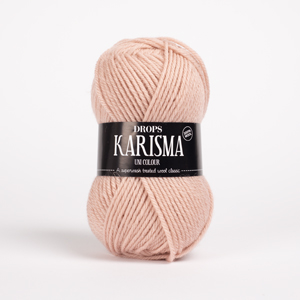

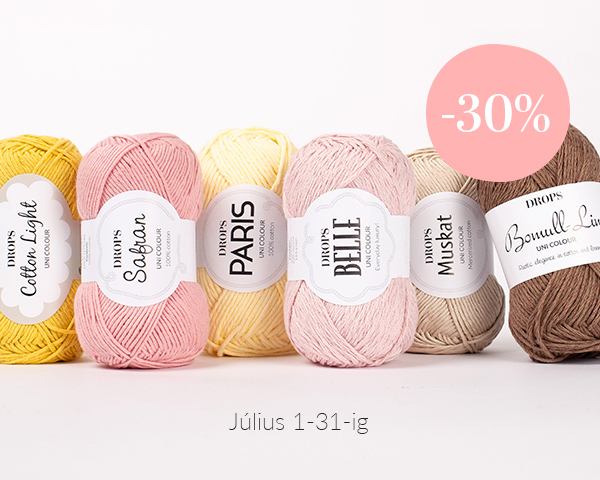

























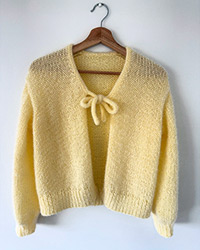
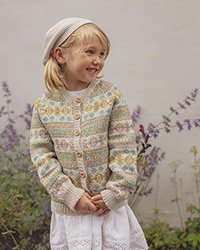
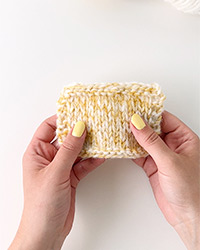
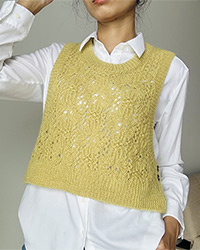

Post a comment to pattern DROPS Baby 25-3
Szívesen vesszük, ha megosztja velünk gondolatait erről a mintáról.
Ha kérdést szeretne feltenni, ügyeljen arra, hogy a megfelelő kategóriát válassza ki, így fegyorsíthatja a válaszadás folyamatát. Það verður að merkja við svæði merktri með *.